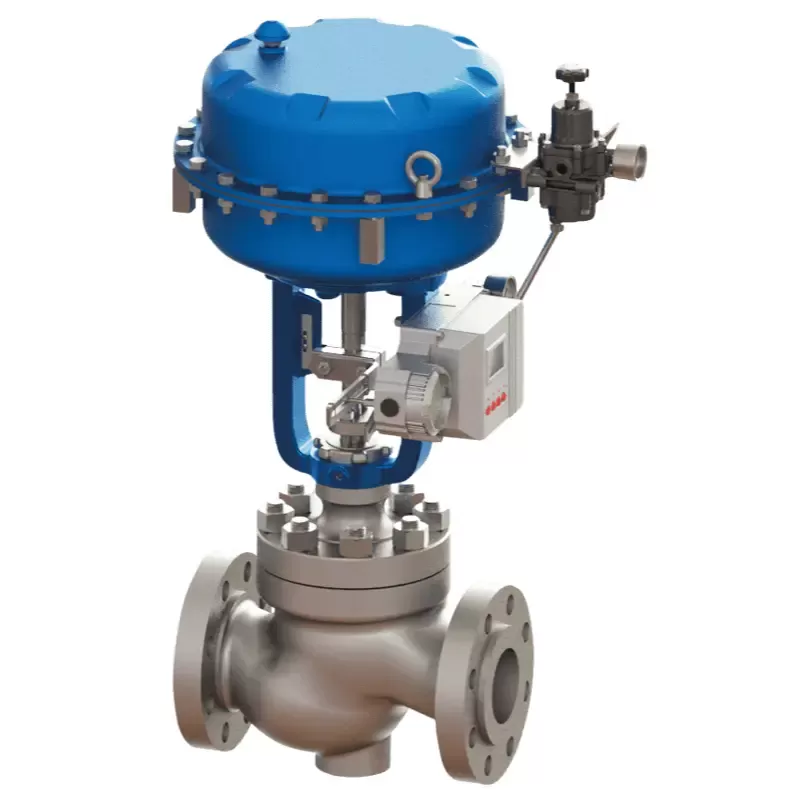Notifications

6 minutes, 32 seconds
-23 Views 0 Comments 0 Likes 0 Reviews

We Are a Leading Control Valve Manufacturer in China, Delivering High-Quality Valves and Precision Actuators Designed to Meet a Wide Range of Industrial Requirements.
Control valves play a vital role in regulating flow, pressure, and temperature in industrial fluid systems. A key factor influencing their performance is the design of the valve trim—specifically whether it is balanced or unbalanced. This distinction significantly affects valve functionality, actuator sizing, durability, and overall system efficiency.
This article outlines the differences between unbalanced and balanced trims, explores their advantages and drawbacks, and offers practical guidance on material selection for corrosion and erosion resistance.
Valve trim refers to the internal components of a control valve that are in direct contact with the process fluid and are typically replaceable. These parts are crucial to flow control, sealing performance, and wear resistance.
Stem – Connects actuator movement to the plug or disc.
Seat – Provides the sealing surface to shut off flow.
Plug/Disc – Modulates flow by changing position.
Back Rings & Bushings – Support and align moving parts.
Packing (Seals) – Prevent leakage around the valve stem.
Note: While the valve body and bonnet are exposed to process fluid, they are not considered trim because they are permanent structural components.
Control valves generally use one of two trim designs—unbalanced or balanced—each suited for different operating conditions.
| Feature | Unbalanced Trim | Balanced Trim |
|---|---|---|
| Plug Design | Solid | With pressure-equalizing holes |
| Pressure Force on Plug | Full differential pressure | Reduced by pressure balancing |
| Actuator Size Required | Larger | Smaller |
| Best Application | Low-pressure, precision control | High-pressure, large pressure drop |
| Construction | Simple | More complex |
| Cost | Lower | Higher |
| Maintenance | Easier | More involved |
In unbalanced trim designs, the full pressure differential (ΔP) acts on the plug, generating a large force that must be overcome by the actuator. This often requires larger actuators, especially in high-pressure systems.
Single-seated globe valves
Low- to moderate-pressure systems
Systems requiring precise flow regulation
High Precision – Excellent for fine control in low-pressure settings.
Simplified Maintenance – Fewer internal parts make servicing easier.
Lower Cost – Economical choice for basic applications.
Better Cavitation Resistance – Often preferred where cavitation is a concern.
Large Actuator Requirement – Not suitable for compact or energy-efficient systems in high-pressure applications.
Limited High-Pressure Use – Force on the plug can be excessive.
Balanced trims include features like holes or vent paths that equalize pressure on both sides of the plug. This significantly reduces the net force, allowing for smaller actuators and improved performance under high-pressure conditions.
Cage-guided globe valves
High-pressure process systems
Applications requiring reduced actuator loads
Smaller Actuators – Reduces cost and space requirements.
Handles High Pressure Drops – Ideal for severe service.
Lower Wear and Vibration – Balanced forces lead to quieter and more stable operation.
More Complex Design – Includes balance holes and seals.
Higher Initial Cost – More intricate manufacturing.
Potential Leakage Paths – Balance holes can be difficult to seal completely.
Selecting the right trim material is essential for performance and longevity, especially in aggressive or abrasive process conditions.
Choose materials compatible with the chemical composition of the process fluid.
| Condition | Recommended Materials |
|---|---|
| General water/steam | Stainless Steel (SS316, SS304) |
| Highly corrosive fluids | Hastelloy, Monel, Titanium |
| Chloride-rich environments | Titanium |
For fluids with high velocity or abrasive particles, hard-facing materials are preferred.
| Condition | Recommended Materials |
|---|---|
| Abrasive slurries | Stellite, Tungsten Carbide |
| High-velocity flow | Stellite, Hard-coated Stainless Steel |
| High-temperature steam | Inconel, Alloy 625 |
| Aspect | Unbalanced Trim | Balanced Trim |
|---|---|---|
| Actuator Size | Larger | Smaller |
| Pressure Suitability | Low to moderate | High-pressure, large ΔP |
| Design Simplicity | Simple | Complex |
| Cavitation Resistance | Better | Moderate |
| Precision Control | Higher | Lower (but sufficient in most cases) |
| Cost | Lower | Higher |
| Maintenance | Easier | Requires skilled service |
Choosing between unbalanced and balanced trim depends on several factors:
System Pressure Differential: High ΔP favors balanced trim.
Actuator Sizing Constraints: Smaller actuators favor balanced designs.
Control Precision Needs: Unbalanced trims offer finer modulation.
Budget and Maintenance Considerations: Unbalanced trims are simpler and more economical.
Equally important is selecting the correct trim material based on corrosion and erosion potential. Proper trim design and material selection ensure optimal control, long service life, and minimal maintenance.
Final Thought: Whether your application demands precision at low pressure or efficiency at high pressure, understanding trim design is crucial. Make trim selection a key part of your valve specification process to improve system reliability and reduce operating costs.Know more about Google SEO Directory

